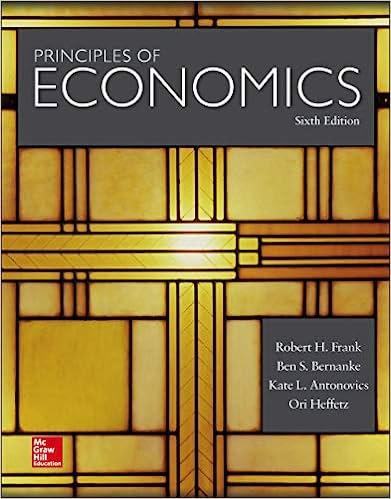Question
1] Suppose that the production function of certain artifacts is determined by: q = kl - 0.8k2 - 0.2l 2, where q represents the annual
1] Suppose that the production function of certain artifacts is determined by:
q = kl - 0.8k2 - 0.2l 2,
where q represents the annual quantity of artifacts produced, k represents the annual quantity
of the capital factor and l represents the annual amount of the labor factor.
a) Suppose that k = 10; draw a graph of the average productivity and total productivity
job. What is the level of the labor factor with which the average productivity reaches
the maximum? How many artifacts are produced at that point?
b) Assuming again that k = 10, draw the curve of the PMgl
. At what level do we have
that the work factor is PMgl = 0?
c) Suppose that the capital factor increased to k = 20. How would its
answers to the previous two sections?
d) Does this artifact production function exhibit constant returns to scale,
increasing or decreasing?
2] A company that produces hockey sticks has a production function
determined by
q = 2 (K L) ?1 / 2
In the short run, the amount of capital equipment in the firm is fixed at K = 100. The rate of
K's rent is r = $ 1 and L's wage rate is w = $ 4.
a) Calculate the curve of the total cost, in the short term, of the company. Calculate the curve of
short-term average cost.
b) What is the short-run marginal cost function of the firm? Which are
the CTcp, the CPcp and the CMg if the company produces 25 canes? Fifty
Canes? One hundred staves? Two hundred sticks?
c) Draw the curves of the CPcp and CMgcp of the company. Indicate the points
calculated in the previous paragraph.
d) Where does the CMgcp curve intersect the CPcp curve? Explain why the
The CMgcp curve always cuts the CPcp curve at its lowest point.
---------------------------------------
This is the information of the document
Diary
Costs
Short term
Long term
The cost of a factor of production is determined by the magnitude of the payment necessary to maintain the resource within its current use (Nicholson; 2008)
Q = f (K, L) = AK ^ ? L ^ ?
Where:
Q is the level of production
K is the capital factor
L is the work factor
?, ? are parameters between 0 and 1
* We will assume a Cobb-Douglas function
There are only 2 factors of production
We are in a perfectly competitive market
Therefore, companies can exchange factors at their prices (r, w)
It is a rational optimizing agent
As seen in the Production Function, the firm seeks to maximize its benefits:
? = R-C
Where:
? are benefits
R is the total income (p * q)
C are the total costs
Fixed Costs: a production expense that does NOT vary with the level of production [CF]
Variable Costs: a production expense that changes with the amount of production. [CV]
Total costs: The result of adding Fixed Costs and Variable Costs
CT = CF + CV
Amount in which the cost varies when the firm decides to change the production level by one unit.
Cmg = ?CT / ?Q
We can also understand marginal cost as the variation of Variable Costs when the level of production changes (see Perloff)
Average Total Cost {Cme}
It can be the CT / Q or the sum of CFme + CVme
Average Fixed Cost {CFme}
CFme = CF / Q
Average Variable Cost {CVme}
CVme = CV / Q
* The nomenclatures vary depending on the book



Step by Step Solution
There are 3 Steps involved in it
Step: 1

Get Instant Access to Expert-Tailored Solutions
See step-by-step solutions with expert insights and AI powered tools for academic success
Step: 2

Step: 3

Ace Your Homework with AI
Get the answers you need in no time with our AI-driven, step-by-step assistance
Get Started


